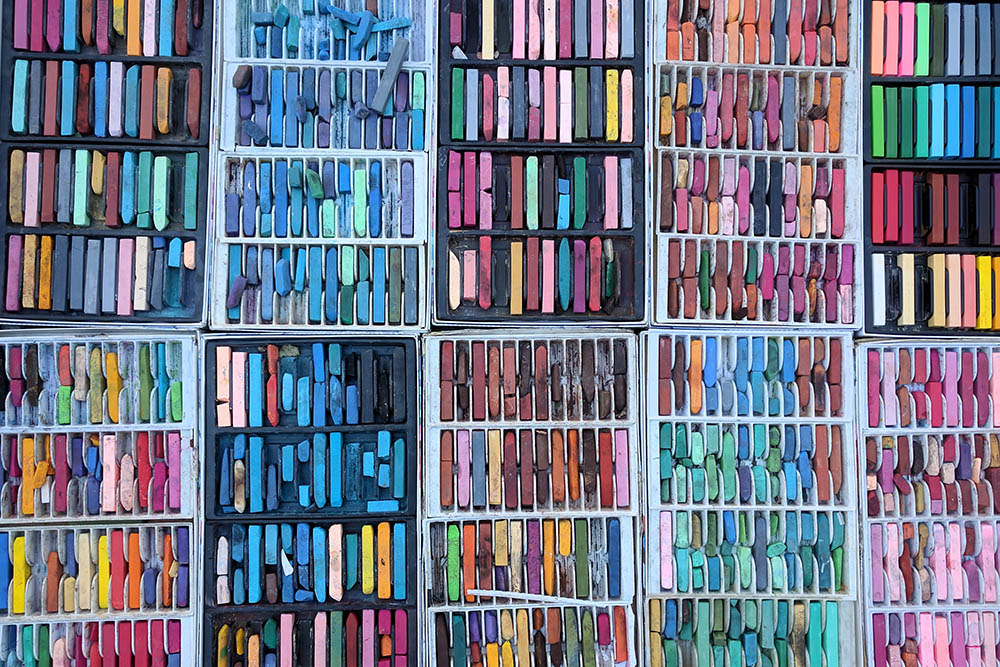Creativity and ideas are the antidote to disruption and together they fuel innovation – the engine that drives value creation, customer satisfaction, personal fulfilment and growth.
So, how do we improve our creativity?
Antonija Pacek, Executive Coach, Educator and Kourdi Associate
‘Discovery consists of looking at the same thing as everyone else and thinking something different.’ Albert von Szent-Györyi, Nobel Prize winner for Physics.
Creativity – which is usefully defined as ‘the ability to produce or bring into existence something new by a course of action; to produce through imaginative skill’ – requires two key elements. First, in-depth expertise in a particular subject (intrinsic immersion in one’s field), and second, the ability to make new connections. Innovation results from a combination of insights and creative thinking. The future belongs to those organisations that can keep pace with shifting challenges and opportunities, that are adaptable and stay relevant – in short, that are creative.
In our experience organisations could really do more to master creative thinking and idea generation. To stay competitive and simply to survive, organisations need to have innovation woven into their strategy. However, experience and evidence shows that some corporations rarely put this on their list of priorities. In the words of the renowned creative thinker and writer Edward de Bono: “As competition intensifies, so does the need for creative thinking. It is no longer enough to do the same thing better… Business needs creativity both on the strategic level and on the front line to make the shift that competitive business demand—from administration to true entrepreneurship.”
Creative leaders are more entrepreneurial, visionary, and resilient when under stress, using the power of their imagination, analogies, powerful allegories, and storytelling to inspire others’ and calm their colleagues at times of turbulence, ambiguity and change. They create a competitive edge for their companies by responding positively when facing difficulties, and inspiring the same behaviour in others.
Before outlining what it is that leaders and organisations can do more, differently and better, it helps to highlight a few points. First, creativity, supported by active leadership, is the starting point for innovation. It allows us to mistakes (which sometimes could be happy accidents as well), encourage initiative, develop curiosity, ask for solutions, create a climate of trust and openness, and reward (or at least not punish) risk taking.
Crucially leaders need to nurture cooperative behaviour, recognising that innovative processes benefit from a diverse range of perspectives, with people building upon each other’s ideas. With more creativity and innovation corporations can better harness and market new products, materials and technology; they can make work more engaging with new initiatives, products, techniques, concepts, and processes; and they are well-placed to keep pace with clients’ constantly shifting wants and needs.
None of this happens naturally: it needs to be prioritised, valued, measured and actively encouraged. New ideas do not appear by chance, only when we search for solutions and new ideas. Isaac Newton once exclaimed: “How I was able to discover the law of gravity? By thinking of it continuously!”
Assessing people’s creativity brings powerful results. The fantastic news is that there is a large and growing body of research highlighting the point that creativity – including creative problem solving and generating novel, useful ideas – can be learned and nurtured on both individual and organisational levels.
How to increase personal creativity and innovation
- Unlearn personal strategies that hinder your creative expression (inner critique can create self-fulfilling prophesy from personal self-perception)
- Use more analogies, associations and metaphors to open a road to your creative and innovative self
- Get into the habit of questioning assumptions and beliefs
- Improvise more often in order to easier adapt to change and turbulent situations
- Find a stimulating place and activity that encourages you to generate ideas
- Make sure you record new ideas and thinking (it’s easy to forget or overlook them)
- Tap more into your creative brain – intuitive, imagination, colorful association, visual, spontaneous, art producing or/and appreciating, emotional (e.g. persistence and enthusiasm). Understand that we need both left- and right-brain sides working together
- Find the creative thinking techniques that work best for you – there are many techniques for increasing personal creativity and innovation, but each of us will find our own personal preference
- Ask ‘what if’, especially to replace thought on ‘things should be this way…’
- Force yourself to always think of more solutions, never a single one
- Be resilient and prepared for your mistakes – they are inevitable, and necessary
- Think positively and adopt a growth mindset – reframe challenges and look for opportunities
How to develop corporate creativity and innovation
- Make creativity and innovation a strategic pillar for your organisation
- Enable your colleagues to share their ideas as much as possible—build a participative atmosphere
- Encourage flexibility for work (such as 3M, Hallmark, Microsoft, Google)
- Encourage diversity and actively seek employees’ ideas
- Stimulate new ideas and problem solving: provide employees with a creative room in which they could generate individually or brainstorming with teams novel ideas
- Record, monitor and follow up good ideas, making sure they are progressed and overcome any blockages or bottlenecks
- Allow open self-expression—do not allow new ideas to be choked or dismissed
To develop greater creativity and innovation with your organisation or team, or simply to assess your own personal creativity, please contact Kourdi Associates.
An innovative tool that develops innovation: IMAGINO
Developed by Antonija Pacek, IMAGINO is an assessment tool measuring individual creativity potential, and an organisation’s support for innovation. The results indicate a respondents’ perception of how creativity is promoted or hindered within the organisation, based on six different drivers.
Available in English and German, individuals, teams and organisations worldwide use IMAGINO to help focus on where and how to increase creativity.
For more information, contact Kourdi Associates info@Kourdi.com



